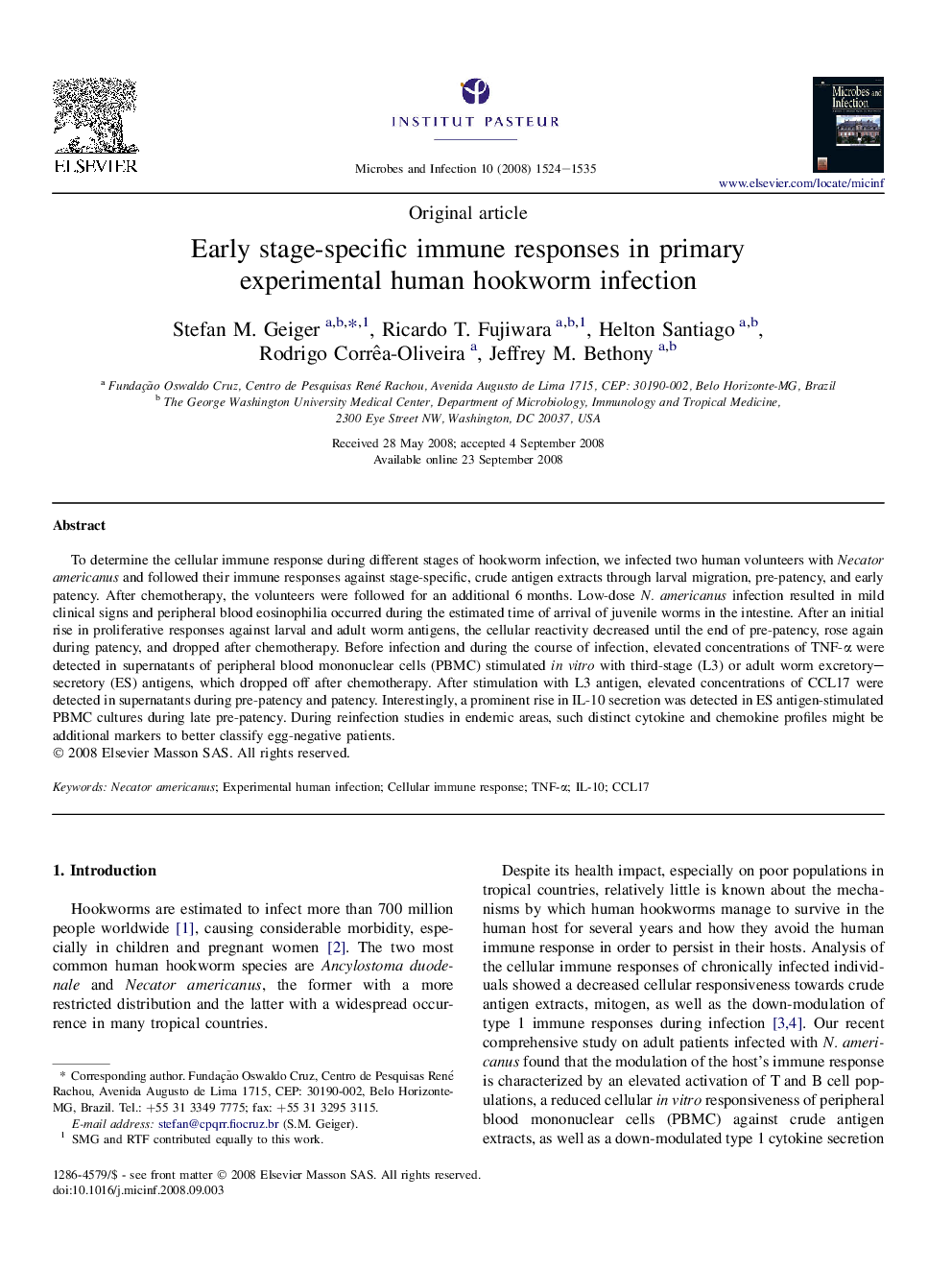| Article ID | Journal | Published Year | Pages | File Type |
|---|---|---|---|---|
| 3415237 | Microbes and Infection | 2008 | 12 Pages |
To determine the cellular immune response during different stages of hookworm infection, we infected two human volunteers with Necator americanus and followed their immune responses against stage-specific, crude antigen extracts through larval migration, pre-patency, and early patency. After chemotherapy, the volunteers were followed for an additional 6 months. Low-dose N. americanus infection resulted in mild clinical signs and peripheral blood eosinophilia occurred during the estimated time of arrival of juvenile worms in the intestine. After an initial rise in proliferative responses against larval and adult worm antigens, the cellular reactivity decreased until the end of pre-patency, rose again during patency, and dropped after chemotherapy. Before infection and during the course of infection, elevated concentrations of TNF-α were detected in supernatants of peripheral blood mononuclear cells (PBMC) stimulated in vitro with third-stage (L3) or adult worm excretory–secretory (ES) antigens, which dropped off after chemotherapy. After stimulation with L3 antigen, elevated concentrations of CCL17 were detected in supernatants during pre-patency and patency. Interestingly, a prominent rise in IL-10 secretion was detected in ES antigen-stimulated PBMC cultures during late pre-patency. During reinfection studies in endemic areas, such distinct cytokine and chemokine profiles might be additional markers to better classify egg-negative patients.
